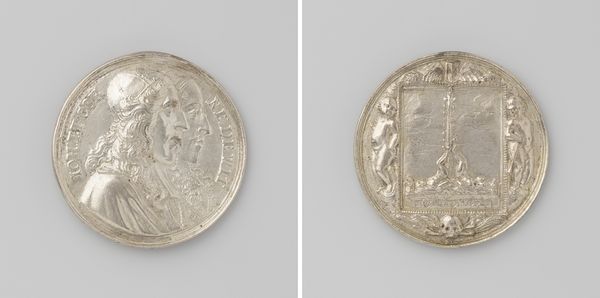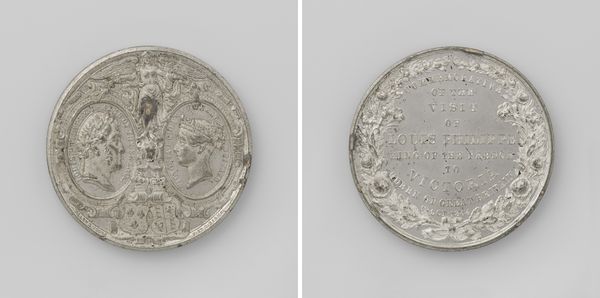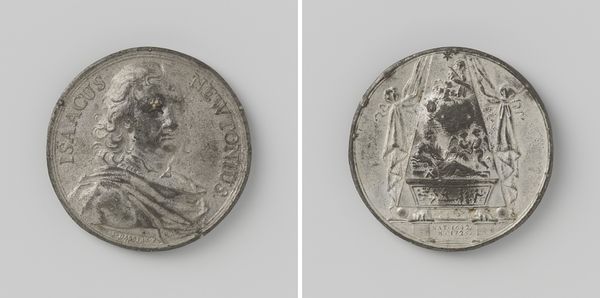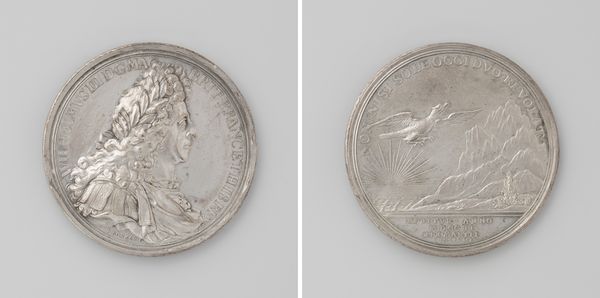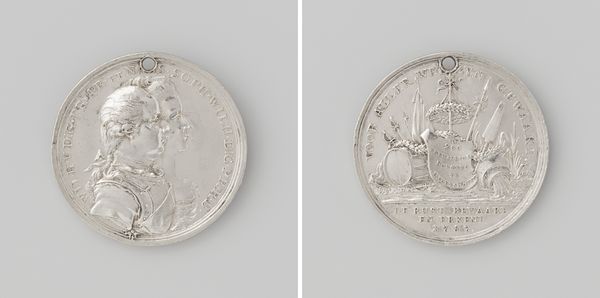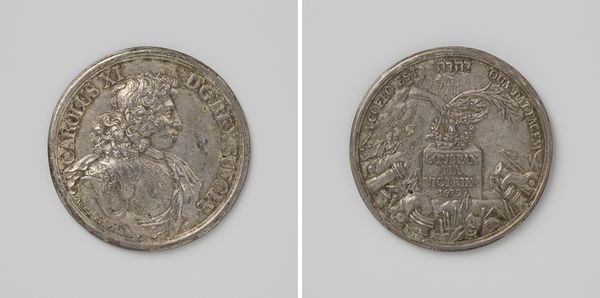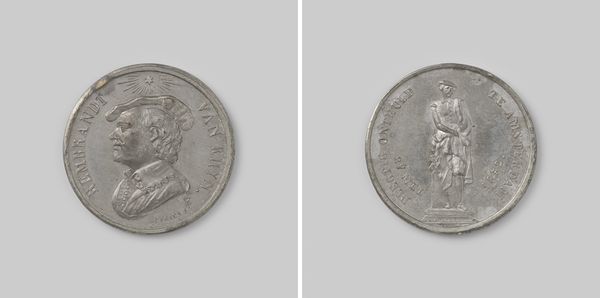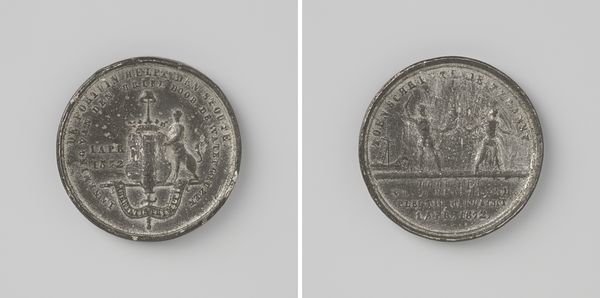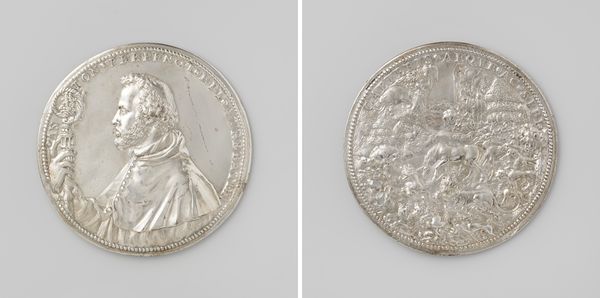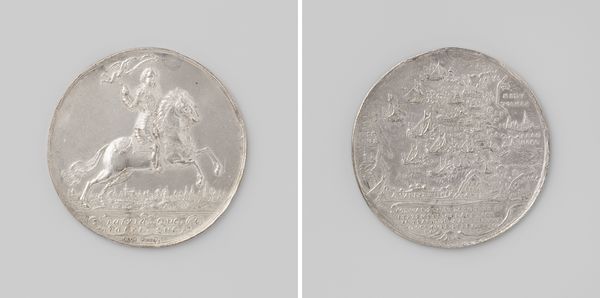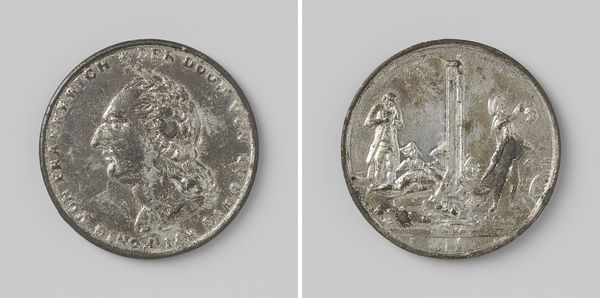
metal, relief, sculpture
#
portrait
#
decorative element
#
baroque
#
metal
#
relief
#
sculpture
Dimensions: diameter 5.3 cm, weight 58.11 gr
Copyright: Rijks Museum: Open Domain
Curator: Let's pause here. This relief, made of metal, is a piece from 1672 depicting Carel Rabenhaupt. It was crafted by Johann Georg Breuer and it captures a distinct Baroque feel, wouldn't you say? Editor: Definitely Baroque. And cold, visually! Like a relic pulled from a frozen lake. The monochrome amplifies a sense of solemn history, a weightiness that makes you want to know more. Curator: Well, these types of medals or relief portraits were, in many ways, the social media profiles of their day. Meant to circulate and commemorate figures or events. On one side, we see the portrait of Carel Rabenhaupt in profile. What catches your eye there? Editor: His wig! Oh, those glorious curls cascading down his shoulders, announcing power and status. And opposite him is an allegory—almost like a city rising defiantly out of water under some symbolic figure. What does that side signify, exactly? Curator: It commemorates the relief of Groningen in 1672. Rabenhaupt led the defense of Groningen against the Bishop of Munster during the Franco-Dutch War. The figure standing is the Vrouwe Stad (City Maiden), symbol of Groningen. The eagle above her stands for Freedom. See the spears? Those represent peace, and of course the city itself behind her, rising like you said out of the water. Editor: Freedom and peace…expressed through rigid metal. Isn't it strange how often we rely on art to make abstract concepts feel almost tangible? To turn hopes and ideas into something you can almost touch. This piece is heavy with a past narrative that still holds emotional residue, you know? Curator: Yes, there's this resonance that goes beyond the object itself. Breuer was capturing more than a likeness, or an event, he was embedding cultural memory into the piece. Even down to the Latin inscription, a nod to classical virtue and enduring legacy. Editor: So, a profile—quite literally, since it's in profile. In his era and ours. Funny to think of our profile pictures carrying echoes of figures like Rabenhaupt. Curator: Indeed, and maybe our own reliefs wait somewhere out there, reflecting ourselves through the symbols we embody.
Comments
No comments
Be the first to comment and join the conversation on the ultimate creative platform.
